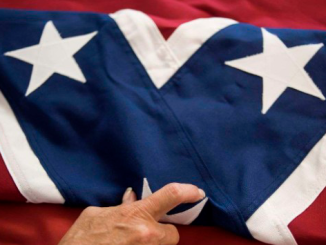
The Army is moving forward with renaming bases that for decades have honored Confederate rebels who waged war against the United States largely to protect and expand the slave trade.
Those new designations are set to be mostly wrapped up in the summer with Fort Pickett, Virginia, being renamed Fort Barfoot on Friday and most other posts set to have name changes by early June.
The new names are part of a larger effort by the Pentagon to scrub references to Confederate military leaders and commemoration of rebel victories. The congressionally mandated Naming Commission, a committee formed to examine all Confederate references across the military, recommended nine Army bases for redesignation.
Those bases were founded long after the Civil War, between the early- and mid-twentieth century — an era in which the bulk of Confederate monuments were erected as Southern states enacted laws disenfranchising Black Americans.
The next redesignation will be Fort Rucker, Alabama, home of the Army’s aviation training, on April 20. The base will be renamed after Chief Warrant Officer 4 Michael Novosel Sr., a veteran of World War II and the Korean and Vietnam wars. He was awarded the Medal of Honor in Vietnam after he flew his helicopter into heavy gunfire during 15 medical evacuations in a single battle, saving 29 soldiers. His helicopter was heavily damaged, and he was also shot while flying.
On April 27, Fort Lee, Virginia, will be redesignated Fort Gregg-Adams, a name that references two trailblazing Black officers: Lt. Gen. Arthur Gregg, the first Black soldier to rise to three-star general in the logistics field; and Lt. Col. Charity Adams, the first Black officer in the Women’s Army Auxiliary Corps, the component of the Army where women served when units were still segregated by gender. Gregg, 94, would be the only living person to have an Army post named after him.
On May 11, Fort Benning, Georgia, which is the home of the service’s infantry, tanker and cavalry scout basic training, will be renamed Fort Moore after Lt. Gen. Hal Moore and his wife Julia Moore. Hal Moorel, a Korean and Vietnam war veteran, is best known for leading 1st Battalion, 7th Cavalry Regiment, in the legendary Battle of Ia Drang Valley in 1965 — immortalized in the book and movie “We Were Soldiers.” The battle was one of the first major engagements for the U.S. in the war and was the first notable employment of modern cavalry and air assault tactics.
In the aftermath of the Battle of Ia Drang, in which the U.S. took heavy casualties, Julia Moore lobbied the Army to reinvent how it notified next of kin of battlefield deaths. Previously, families had been notified via telegram, sometimes delivered by a cab driver. Following Julia Moore’s advocacy, the service implemented a support network that involved the family being notified in person by a soldier wearing their dress uniform, a system still in use today.
“There can be no better way to inspire the men and women who will train to defend our nation, and particularly to provide recognition to the widows of our Nation’s fallen, than to name our installation for a couple who exemplifies America’s highest standards of courage, character, and compassion — Hal and Julia Moore,” Maj. Gen. Curtis Buzzard, Fort Benning’s commander, said in a press release.
Fort Hood, Texas, is set to be renamed Fort Cavazos on May 9 after Richard Cavazos, the Army’s first Hispanic four-star general and a veteran of the Korean and Vietnam wars. He earned the Distinguished Service Cross separately in each conflict for heroic actions in combat.
Fort Bragg, North Carolina, which is home to the Army’s airborne and Special Forces, will be renamed Fort Liberty on June 2. It’s the only post that will not be named after a famed member of the service. It is unclear why Army planners took a unique path with Fort Bragg, amid a vast roster of Medal of Honor recipients from the airborne and Special Forces communities.
“The name Fort Liberty was not chosen at random,” a news release from Fort Bragg said. “Those who served on the Naming Commission for Fort Bragg struggled to agree on one name from the more than 50 Medal of Honor recipients who could capture and encompass the scope and spirit of this installation. Each of them is just as deserving as the other. What resonated among the Commission and community members was the desire to name the installation not after a single person, but a value or characteristic that would have significance for everyone.”
Fort Gordon’s date is not set in stone, but garrison officials are aiming for October, according to a spokesperson for the Georgia base. That could coincide with the birthday of Dwight D. Eisenhower, who will be the installation’s new namesake.
Fort A.P. Hill, Virginia, and Fort Polk, Louisiana, do not have dates yet for their renaming, spokespersons for each post told Military.com.
* Article From: military.com


